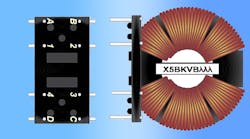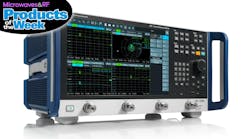Frequency synthesis has long represented a means of generating high-frequency signals that remain stable over time and temperature. At RF and microwave frequencies, many different synthesis techniques exist, based on analog and digital components and presenting many different tradeoffs in terms of size, cost, and performance, but the many different requirements for stable RF/microwave signals have justified the use of many different frequency synthesis methods, using both analog and digital approaches. Frequency synthesizers can range in size from tiny integrated circuits (ICs) to full rack-mountable electronic systems with modulation and other functions. As this first of a two-part article on frequency-synthesizer fundamentals will show, frequency synthesizers may vary widely in their frequency ranges and step sizes, but they share goals of attempting to generate precise, noise-free output signals as repeatedly as possible, even when operating under harsh conditions.
Microwave frequency synthesizers generally attempt to stabilize the phase of a high-frequency oscillator, such as a dielectric resonator oscillator (DRO), voltage-controlled oscillator (VCO), or yttrium-iron-garnet (YIG) oscillator, by locking it within one or two tuning loops to the phase of a lower-frequency reference oscillator, such as a temperature-compensated crystal oscillator (TCXO) or an oven-controlled crystal oscillator (OCXO). Phase noise is often a performance parameter of comparison for many frequency synthesizers, with many designs attempting to approach the stability of the thermal noise floor of -174 dBc/Hz at room temperature.








